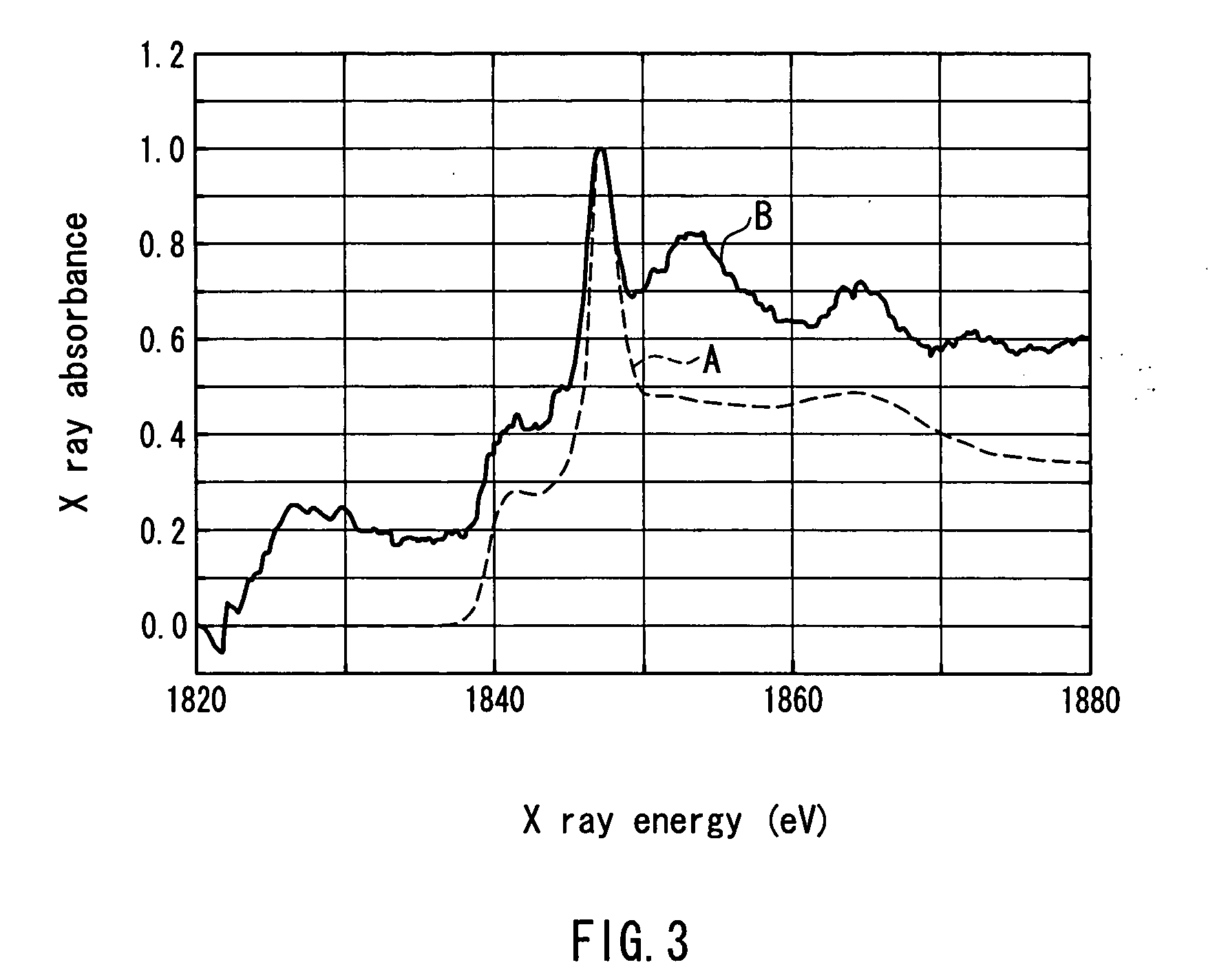Non-aqueous secondary battery and method for producing the same
a secondary battery and non-aqueous technology, applied in the manufacture of secondary cells, cell components, final product manufacturing, etc., can solve the problems of difficult to form a uniformly thin film or previously control the amount of li introduced into the negative electrode material, poor battery characteristics, and high capacity. , to prevent the formation of dendrites, prevent the degradation of battery characteristics, and high capacity
- Summary
- Abstract
- Description
- Claims
- Application Information
AI Technical Summary
Benefits of technology
Problems solved by technology
Method used
Image
Examples
example 1
[0097]SiO particles (average particle size: 5.0 μm) serving as a raw material for the core particles were heated to about 1000° C. in an ebullated bed reactor to bring the heated core particles into contact with a mixed gas of benzene and a nitrogen gas heated at 25° C. for CVD treatment at 1000° C. for 60 minutes. The carbon (hereinafter referred to as “CVD carbon”) produced by thermal decomposition of the mixed gas was deposited onto the surface of the core particles to form a covering layer thereon. Thereby, a negative electrode material was obtained.
[0098]The composition of the above-obtained negative electrode material was determined from a change in mass before and after the formation of the covering layer and found to be SiO:CVD carbon=85:15 (mass ratio).
[0099]Subsequently, using the negative electrode material, a negative electrode precursor sheet was produced in the following manner. A negative electrode material mixture-containing slurry was prepared by mixing the negative...
example 2
[0105]A mixture was prepared by mixing 80 g of SiO particles (average particle size: 1 μm), 20 g of fibrous carbon (average length: 2 μm, average diameter: 0.08 μm) and 10 g of polyvinyl pyrrolidone with 1 L of ethanol. The mixture was further mixed using a wet-type jet mill to prepare a slurry. Using the slurry, composite core particles comprising SiO particles and fibrous carbon (CF) were produced by a spray-drying method (ambient temperature: 200° C.). The composite core particles had an average particle size of 10 μm. The composite core particles in an amount of 10 g were then heated to about 1000° C. in an ebullated bed reactor to bring the heated composite core particles into contact with a mixed gas of benzene and a nitrogen gas heated at 25° C. for CVD treatment at 1000° C. for 60 minutes. Thereby, the carbon produced by thermal decomposition of the mixed gas was deposited onto the surface of the composite core particles to form a covering layer thereon. Thereby, a negative ...
example 3
[0108]A mixture was prepared by mixing 70 g of SiO particles (average particle size: 1 μm), 30 g of graphite (average particle size: 3 μm) and 10 g of polyvinyl pyrrolidone with 1 L of ethanol. The mixture was further mixed using a wet-type jet mill to prepare a slurry. Using the slurry, composite core particles comprising SiO particles and graphite were produced by a spray-drying method (ambient temperature: 200° C.). The composite core particles had an average particle size of 15 μm. The composite core particles in an amount of 10 g were then heated to about 1000° C. in an ebullated bed reactor to bring the heated core particles into contact with a mixed gas of benzene and a nitrogen gas heated at 25° C. for CVD treatment at 1000° C. for 60 minutes. Thereby, the carbon produced by thermal decomposition of the mixed gas was deposited onto the surface of the composite core particles to form a covering layer thereon. Thereby, composite particles covered with the carbon covering layer...
PUM
| Property | Measurement | Unit |
|---|---|---|
| Thickness | aaaaa | aaaaa |
| Energy | aaaaa | aaaaa |
| Fraction | aaaaa | aaaaa |
Abstract
Description
Claims
Application Information
 Login to View More
Login to View More - R&D
- Intellectual Property
- Life Sciences
- Materials
- Tech Scout
- Unparalleled Data Quality
- Higher Quality Content
- 60% Fewer Hallucinations
Browse by: Latest US Patents, China's latest patents, Technical Efficacy Thesaurus, Application Domain, Technology Topic, Popular Technical Reports.
© 2025 PatSnap. All rights reserved.Legal|Privacy policy|Modern Slavery Act Transparency Statement|Sitemap|About US| Contact US: help@patsnap.com



